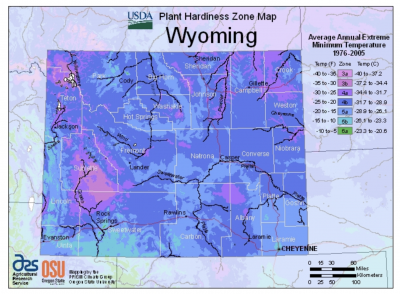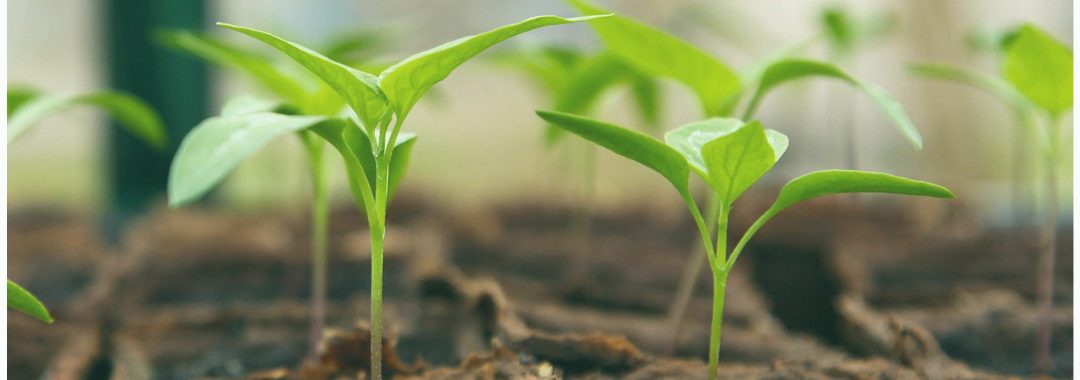The USDA Plant Hardiness Zone map provides a good rough guide for gardeners choosing plants for landscaping and gardening. We have found a lot of misunderstanding, however, about what the zone map can and can’t do.
As an example, much of Wyoming is in zone 4b. Plants in this zone should be able to withstand low temperatures of -20 to -25 degrees. Other parts of Wyoming are zone 5a, with average minimum temperatures between -15 and -20 degrees.

A hardiness zone is a geographically defined area in which a specific category of plant life is capable of growing, as defined by climatic conditions, including its ability to withstand the minimum temperature of the zone (USDA).
As anyone living in Wyoming knows, it can get much colder than the zone’s minimum temperatures, even varying within specific zones. The hardiness zone map has other limitations as well. It does not consider duration of the cold temperatures or factors such as snow cover and soil moisture, which can help buffer cold temperatures. It also does not account for humidity and summer temperature extremes, the number of frost days or the effects of a catastrophic cold snap.
Summer Temperatures
In general, the weakness of the zone map for Wyoming gardeners is that it is based only on the average annual extreme minimum temperature without accounting for summer temperatures the plant might also endure.
For an extreme example, much of Arizona is the same zone as much of the Pacific Northwest. The difference between 90-, 100- and 110-degree days can really make a difference in which plants might work best in a certain situation.
Combine that with soil moisture and humidity, and we see completely different plant types living in the same zone. You can be more successful when you understand what plants will work best with your winter – and summer – temperatures.
Cold Snaps, Snow Cover
The hardiness zone map doesn’t take into account how many frost-free days your yard may experience or the variability within zones. Varying terrain and microclimates make Wyoming different from other parts of the U.S., where zone boundaries show more continuity. Understanding which plants can survive late spring or early fall frosts can be crucial to long-term, consistent success.
When picking trees and other perennials, we need to pick plants that can withstand large temperature swings. On November 10, 2014, much of Wyoming had what could be called a catastrophic cold snap. In less than 48 hours, many parts of the state went from temperatures in the 50s and 60s to below -20 degrees.
The 80-degree temperature shift was too much for many plants, and even plants that generally do well struggled. That event left tens of thousands of trees across the state with brown needles. Many died.
If we pick trees that can’t withstand temperature swings, they may be fine for several years then die or show other signs of stress, such as the tops or middles dying out. A good strategy is to pick a plant from a zone lower than for your location.
On the other hand, many parts of Wyoming have reliable snow cover for the coldest part of the year. This snow cover helps some plants survive in a lower (colder) USDA zone than otherwise might be expected.
Think Outside the Zone
When researching and selecting plants, regional or state sources (books, extension bulletins, catalogs) are a good place to start. Seek out local resources such as garden club members and Master Gardeners in your area. Extension educators from the UW Extension Agriculture and Horticulture Team are available to help.
Certainly, the hardiness zone map is a good tool for Wyoming landowners and gardeners. When we understand its limitations, we can use it more successfully. Happy gardening!





